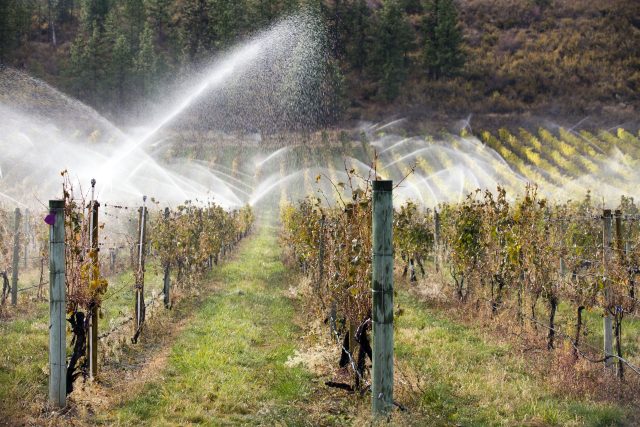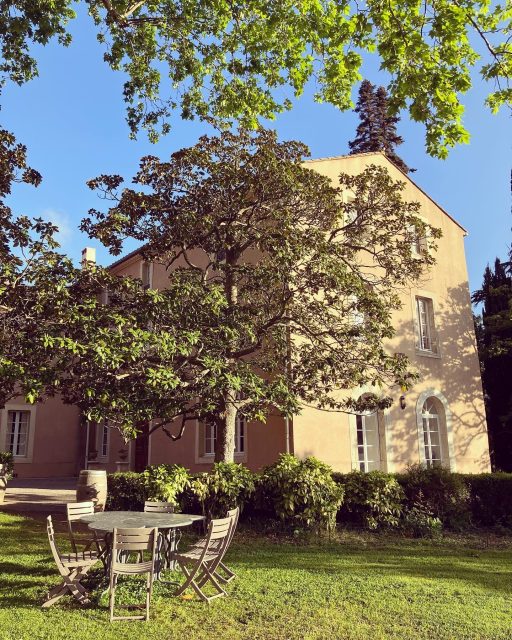This website uses cookies so that we can provide you with the best user experience possible. Cookie information is stored in your browser and performs functions such as recognising you when you return to our website and helping our team to understand which sections of the website you find most interesting and useful.
Languedoc winemakers push for irrigation rights
Winemakers in Corbières, one of the biggest appellations in the Languedoc, are gearing up to once again lobby the AOP for approval to irrigate its vines, learns db.

When Nathalie Estribeau, winemaker at Château Haut Gléon in Corbières says that “all our wines are completely dry”, she alludes not only to the flavour profile of their rosé but to the near total absence of water from the property’s soils.
Irrigation is prohibited in Corbières, despite temperatures climbing to 30° Celsius in the month of July, forcing Haut Gléon’s 100-year-old Grenache vines to stretch their expansive roots eight metres or more into the clay and limestone soils to search for water.
“We continue to talk to the appellation about getting approval to irrigate but it takes a long time,” Estribeau tells the drinks business.
“We receive very little rainfall here and when it does rain the wind dries it almost instantly. If we don’t have enough water underground then the grapes won’t be good and it will become harder to make balanced wines. If the weather continues like this then we might struggle.”
Having worked for Château Haut Gléon for the past six vintages Estribeau has seen the creeping changes to Corbières’ climate. The sea is 20km away and the tramontane, a strong local wind, dries the vines at record speed. While harvest here used to begin in September, last year wineries began picking grapes in August.
“The 2023 vintage looks promising but it all depends on whether we have enough water. We urgently need the sea breeze to refresh our vineyards,” Estribeau says.
It is why the estate’s team, along with other Corbières winemakers, plan to raise the issue of irrigation once again at a forthcoming “big conference” scheduled for later this year to address water issues in the area.
According to Estribeau, around 100,000 litres of water per day are released into the air from natural water sources which helps to “freshen up the atmosphere” at Château Haut Gléon but none of this precious H20 goes directly to the vines.
Thankfully around 80% of the vines on Haut Gléon’s property are north-facing, which keeps them cool. It also explains why the estate grows a bigger proportion of white varieties —including Vermentino (Rolle), Marsanne, Grenache Gris and Alboriño — compared with neighbouring wineries in Corbières.
“Our cool location allows us to keep the freshness in our white wines,” says Estribeau.

Irrigation irritation
Not only would permitting the use of irrigation allow winemakers to continue crafting balanced, elegant wines, it would also enable them to increase their volumes.
As the most premium wine estate in the Vignobles Foncalieu portfolio, the largely on-trade focused Château Haut Gléon has an extremely low crop, enough to make “just 30 hectolitres of wine per hectare,” says Estribeau.
She says that while many of her compatriots suffered with frost during the last few years, “2021, the year we had the frost, was an amazing vintage!”
Perhaps unsurprisingly so, as the water bestowed on the vines by the melting frost helped nourish the fruit.
Last year, a surprise decision was taken to grant Bordeaux appellations Pessac-Léognan, Pomerol and Saint-Emilion permission to irrigate their vines, given the “exceptional ecological conditions” these regions faced, with low rainfall and repeated heatwaves threatening crops.
The ruling was made despite irrigation normally being forbidden in the region.
Will Languedoc producers be granted a similar reprieve as temperatures continue to rise? Or will they have to grit their teeth and pray for rain, much to the dismay of beachgoers in the region’s Espiguette and Argelès-sur-Mer?
Ironically, it’s those very wines we seek out to refresh our parched palates on a hot summer’s day — blush-coloured rosé and crisp, mineral whites from southern France — that are often themselves most in need of liquid refreshment.

